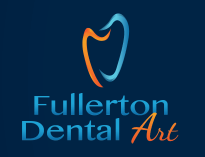 May of our Fullerton Dental Art patients want to know, “do veneers hurt?” Typically not but the answer requires a more detailed explanation of the process. Veneers are thin shells made of medical-grade porcelain or composite resin that are bonded to the front surfaces of teeth to improve stained, misaligned, chipped or cracked appearances. Because they are custom-made to closely resemble the color of your natural teeth, we use veneers for a wide array of cosmetic corrections, ranging from teeth whitening to orthodontic adjustments. Placing veneers involves a fairly simple procedure, little or no anesthesia, no recovery time, and hardly any discomfort.
May of our Fullerton Dental Art patients want to know, “do veneers hurt?” Typically not but the answer requires a more detailed explanation of the process. Veneers are thin shells made of medical-grade porcelain or composite resin that are bonded to the front surfaces of teeth to improve stained, misaligned, chipped or cracked appearances. Because they are custom-made to closely resemble the color of your natural teeth, we use veneers for a wide array of cosmetic corrections, ranging from teeth whitening to orthodontic adjustments. Placing veneers involves a fairly simple procedure, little or no anesthesia, no recovery time, and hardly any discomfort.
Veneers are used to improve a single discolored tooth or to lighten an entire set of front teeth. These cosmetic exteriors can also be used to alter the size or shape of a tooth by masking undesirable defects, such as stained, chipped, cracked, or damaged teeth and are ideal for concealing discolored fillings. Fullerton Dental Art Patients may also consider veneers to close small, unsightly gaps between their front teeth, especially when other forms of treatment, such as braces, is not a suitable option.
How Are Veneers Applied, And Do Veneers Hurt?
Initially, an impression of your teeth will be taken and given to a dental technician who will use it to make a customized veneer that perfectly fits your tooth. A shade guide is used to make sure that the veneer matches the appearance of your natural dental enamel as closely as possible, which will make it close to impossible to tell it apart from your other teeth.
Porcelain veneers are more stain-resistant and natural-looking than composite veneers. However, composite veneers are thinner, so less tooth surface needs to be removed before they are applied. Resin-based composite veneers are usually placed in one appointment. However, ceramic or porcelain veneers involve a more complicated procedure, as it can take up to a couple of weeks to prepare these veneers. An experienced Fullerton Dental Art dentist can help you determine which type of veneer best suits your needs.
Before a veneer can be placed, a minuscule amount (usually less than half a millimeter) of the outer enamel of the tooth is removed. This ensures the veneers are the same size as the surrounding natural teeth and the thickness of the tooth is not dramatically changed. Using an acidic tooth conditioner, the surface of the tooth is roughened to create an etched enamel surface. A liquid bonding agent (etching gel) is then applied, which seeps into the microscopic fissures on the surface of the tooth that have been created by the etching process. Once the liquid bonding agent hardens, it creates a strong base for the veneer, which is then attached to the tooth with specialized cement that chemically bonds with the etching gel used earlier in the process. The veneer is then gently pressed into place so that any excess cement can seep out from underneath the veneer to be removed for a clean finish. Ultraviolet light is used to harden the cement into place.
In the majority of cases, the placement of veneers is a pain-free procedure. The tooth can be numbed, but for many patients, the amount of enamel that is removed is so tiny that they usually do not require any anesthesia. In part, the answer to “do veneers hurt?” depends on the amount of enamel that needs to be removed. After the veneers have been placed, there isn’t any downtime. However, you may experience some mild temporary sensitivity to hot or cold, as well as chewy, hard, or crunchy foods. During this period, you should avoid such items until you can return to your normal dietary habits.
Related Posts
We Use Dental Veneers in Fullerton to Correct a Variety of Challenges
We provide dental veneers in Fullerton for patients that want to change the appearance of their teeth. Dental or porcelain veneers are thin pieces of porcelain that can correct minor defects with one's teeth. Veneers …
A Veneers Dentist Can Restore Your Damaged Teeth
A veneers dentist can restore your teeth once they have become damaged. Even though teeth are made out of strong enamel, the enamel isn't strong enough to prevent cracks and chips that can be created …
Read Facts You Should Know About Dental Bonding
If you have an interest in improving your smile, dental bonding can help. This is a non-invasive procedure that we can perform very quickly. In fact, if you are looking for a near-immediate improvement to …
Ways to Keep Your Dental Bonding in Good Condition
Dental bonding is a popular restorative solution that our Fullerton dental office uses for both children and adults. This is perhaps the least invasive type of restoration because it does not require us to remove …
